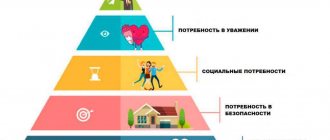Choleric
It has low sensitivity, high reactivity and activity. Due to the predominance of reactivity, he is characterized by impetuosity, short temper, and rapid mood swings. Due to some rigidity, he may have difficulty switching attention, but he is persistent in the pursuit of his goals and is very efficient. He is proactive and easily generates unusual ideas. Due to the combination of rigidity and excitability, one may not calculate the strength, “burn out” and become exhausted. More often an extrovert.
Sanguine
A sanguine person, like a choleric person, has high levels of reactivity and activity, but these characteristics are balanced, which ensures balance. A sanguine person has high plasticity, so he easily switches attention and quickly responds to changing circumstances. Quite sensitive, prone to vivid expression of feelings, but emotions are usually shallow, quickly appear and quickly disappear. A sanguine person concentrates well, but his productivity directly depends on his interest. He easily gets excited when doing something exciting, becomes indifferent when there is no interest, and, if possible, quickly changes the area of effort. In most cases, an extrovert.
Phlegmatic person
Characterized by high activity, low reactivity, excitability and sensitivity. Balanced, cool-headed. Due to high rigidity, he is prone to delayed emotional reactions (for example, he may begin to worry after the end of the conflict), has difficulty switching attention, does not like to change habits, and is quite slow to learn new skills. Slowness in phlegmatic people is combined with determination, high efficiency and productivity. Stubborn. Typically an introvert.
Melancholic
The high sensitivity of a melancholic person is complemented by low reactivity, which explains the tendency to an asthenic type of emotional response - tears, touchiness and vulnerability - with little regard for current external influences. It worries deeply and strongly. Compassionate. Often prefers work related to helping people, or monotonous activities that involve the absence of heavy loads. When achieving internal emotional balance it can be very productive. Learns quickly. Prone to timidity and lack of self-confidence. Mostly introverted.
What is temperament
Temperament is based on the type of higher nervous system. People (like animals) differ from each other from birth:
- by the strength of the processes of excitation and inhibition;
- the balance of these processes;
- mobility (changeability) of excitation and inhibition processes.
Taken together, this determines the endurance of nerve cells, that is, the endurance of the psyche.
Discovery of temperament
When excitation predominates over inhibition, conditioned reflexes are formed quickly and slowly subside, and when the ratio is reversed, conditioned reflexes are formed slowly and quickly fade away. These patterns were discovered by the domestic scientist Ivan Petrovich Pavlov.
This discovery made an invaluable contribution to the further development of psychology and pedagogy. Currently, there is no doubt that each person requires an individual approach in the process of upbringing, training or psychological correction.
Temperament and personality
Temperament is a set of innate mental properties. It serves as the basis for character formation. This is what is biological in a person.
At the same time, temperament is involved in the formation of personality. As a set of individual characteristics, it influences the dynamics and emotional side of human activity and behavior.
Depends on temperament:
- speed of occurrence of mental activity;
- stability of mental processes;
- mental tempo and rhythm;
- intensity of mental processes;
- direction of mental activity.
Anxiety, impulsiveness, emotionality, impressionability and other personality traits depend on temperament.
Temperament and character
Temperament is often confused with character. I propose to put an end to the differentiation of these issues once and for all.
- If character is a product of socialization, then temperament is an innate, unchangeable feature of an individual.
- You cannot change your temperament, but you can learn to manage it. Character can be changed.
- Temperamental traits can be masked by personality traits, making it difficult to determine what type of temperament a particular person belongs to.
Temperament and activity
Temperament provides an individual style of activity, that is, work methods characteristic of a particular person. So, for example, one child, when solving a problem, can sit idle for a long time, think about it and immediately write down the result, while another will immediately start writing something down, sketching it out, crossing it out, and after a while will isolate the main thing from it. Same result - different ways to achieve it.
Biological in man
From the point of view of anatomy and physiology, man is the most common biological creature. Each of the systems present in our body solves certain biological problems. For example, the circulatory system provides all organs with oxygen and nutrients, and the lymphatic system ensures their cleansing.
We are completely dependent on the state of these systems, so we must constantly maintain them. We need to sleep, eat, and satisfy other physiological needs. Nevertheless, sometimes we get sick, and then the whole body begins to “fail.” But soon the immune system copes with the disease, and all systems work as usual again. All these processes are purely biological , and occur in us in exactly the same way as in most warm-blooded animals.
Interestingly, many of our systems are inferior in their capabilities to similar animal systems. Our eyesight cannot compare to that of an eagle, we cannot run as fast as a cheetah, and our stomachs cannot digest grass into nutrients the way a cow's stomach can. Nevertheless, in our overall potential we are superior to all animals, and this is ensured precisely by our social nature.
Properties of temperament
Each temperament has certain properties.
Sensitivity
This implies the necessary minimum force of external stimulation to initiate reactions in the individual’s psyche. In addition, sensitivity involves assessing the speed of this reaction.
Reactivity
Determines the strength and speed of response to an unexpected stimulus, that is, these are involuntary reactions to light, loud sound, unexpected action. A person’s distractibility and ability to concentrate depend on reactivity.
Activity (passivity)
The degree of influence of temperament on the stimuli surrounding it. Simply put, this is the speed with which a person can influence the circumstances and obstacles that prevent him from achieving his goal. Activity stems from the relationship between a person’s orientation to the outside world (previous point) and focus on one’s goals, desires, needs, and beliefs.
Plasticity (rigidity)
This characterizes the speed of a person’s adaptation to changes in the external environment. Plasticity is a good ability to adapt, rigidity is the impossibility, difficulty in changing beliefs, views, interests.
Extraversion (introversion)
A person’s orientation towards the external or internal world (direction of vital energy). The second interpretation: a person’s orientation towards the external present (extroversion) or the figurative past or future (introversion).
Excitability of emotions
Determines the speed of emotional response to a minimal external stimulus (the minimal force to which an emotional reaction occurs).
Rate of reactions
This is the speed of mental processes and reactions (duration): speed of reaction, rate of speech, speed of mind.
The properties of temperament manifest themselves depending on the situation and specific conditions. Therefore, people of different temperaments can act completely differently in identical situations, but in the same way under different conditions.
Social in man
Man is the only representative of the animal world who does not adapt to the environment, but adapts it to himself. It is worth noting that human influence on nature can be both destructive and creative. With his actions, he can disrupt its natural harmony, or he can ennoble the world around him, turning gloomy swamps into blooming gardens.
Moreover, almost any human activity is inextricably linked with society. It is only in our interaction with other members of our species and with the environment that we become human, for only then are we truly different from other animals. Our social essence manifests itself through communication, conscious work, the ability to compromise and the desire to be creative by creating something for others.
Temperament types
In psychology, it is customary to distinguish 4 types of temperament, or types of the nervous system (according to its properties). But at the same time, there are several typologies.
According to the processes of excitation-inhibition
Sanguine
This is a strong, agile and balanced type. It is characterized by a rapid process of excitation and its rapid change to inhibition.
- A person with this type of psyche is characterized by love of life, activity, sociability, and responsiveness.
- He is not prone to worry, easily adapts to new conditions, and strives for leadership.
- A sanguine person is successful in work, friendship and love.
- He easily switches from one activity to another and changes hobbies with the same ease.
- However, without external stimuli, he begins to get bored and becomes lethargic.
- He is always distinguished by some superficiality in his perception of people and phenomena, which sometimes causes difficulties in interpersonal relationships. But a sanguine person can easily cope with them.
- The feelings and emotions of a sanguine person are bright, but unstable.
- Laughs often and loudly, but gets angry over trifles.
- Resourceful and agile, can manage emotions.
- As a rule, he has fast speech.
Phlegmatic person
This is a strong, inert and balanced type. Conditioned reflexes are developed slowly, but then become very stable.
- A person with this type is always passive, cautious and reasonable. Sometimes it comes to the point of “tediousness and nausea.”
- At the same time, he is peaceful and friendly.
- It is easy to manage and control its actions.
- A phlegmatic person is not emotional or sensitive, but you can always rely on him.
- He has great perseverance, self-control, patience, high efficiency, but is slow.
- Stable in relationships, not prone to change.
- Provides good resistance to negative long-term stimuli from the outside. The self-control and composure characteristic of a phlegmatic person sometimes turns into indifference to oneself, others, and work.
Choleric
Strong, agile and unbalanced type. Excitation processes prevail over inhibition processes.
- Easily excitable, aggressive and restless type.
- Choleric is characterized by variability, inconstancy, impulsiveness, activity and optimism.
- Along with great vital energy, one can distinguish lack of restraint and abruptness of movements and actions, loudness, low level of self-control, impatience and frequent sudden mood swings.
- A choleric person is distinguished by expressive facial expressions, fast speech and rapid movements.
Melancholic
Weak, inert (or mobile) and unbalanced type.
- Characterized by a pessimistic attitude, a tendency to anxiety and reasoning.
- He is reserved and uncommunicative, easily vulnerable, emotional, and highly sensitive.
- Shows little resistance to external stimuli, is inhibited and passive.
- A melancholic person, as a rule, is not self-confident, timid, timid, and touchy.
- But his inner world and associative thinking are very reeking.
- A melancholic person is not distinguished by expressive facial expressions and movements, and does not adapt well to new conditions.
- Characterized by quiet speech, poor attention and fatigue.
Galen's typology
The Roman philosopher and physician Galen also identified 4 types of temperament, but he focused on feelings. This typology does not contradict the others, on the contrary, it complements them and, in my opinion, is of particular interest from the position of everyday psychology.
Sanguine
Pliable to feelings, but quickly cools down. Strives for pleasure, a trusting and gullible person.
Choleric
A man of passions. He is characterized by pride, vindictiveness and ambition.
Phlegmatic person
Resistant to the influences of feelings. Doesn't complain or be indignant, gets irritated with great difficulty.
Melancholic
Sadness is his main characteristic. Any suffering seems unbearable, and desires are saturated with sadness. He often thinks that he is being neglected and is offended by small things.
According to the ratio of signaling systems
The signal system is usually called a set of mental processes responsible for perception, analysis of information and response. A person has two such systems:
- the first signaling system (the assimilation of information through the activity of the cerebral cortex, through receptors);
- second signaling system (everything related to speech and words).
Based on the relationship between signaling systems, 3 types of people (temperaments) can be distinguished.
Artist
The first signaling system predominates.
Thinker
The second signaling system predominates.
Mixed type
Approximately equal influence of both systems.
This classification is considered relative, since the severity of the systems depends on the specific type of activity.
Constitutional theory of E. Kretschmer
The German psychiatrist and psychologist Kretschmer compiled a typology of temperaments depending on a person’s physique.
Schizothymic (asthenic type)
A weak-willed and withdrawn type, prone to emotional swings. A gentleman and a dreamer, an idealist. At the same time, the schizothymic person is stubborn and selfish, prone to abstract thinking.
Cyclothymic (pyknic type)
Like the first type, it is distinguished by emotional waves. He is a cheerful chatterbox and humorist, a realist, and a good conversationalist.
Ixothymic (athletic type)
He is not flexible in thought, calm and unimpressive. His gestures and facial expressions are restrained. Ixothymic has difficulty adapting to new conditions.
By observing a person’s behavior and assessing his physique, we can guess what type of temperament he belongs to. This will be useful for establishing contact.
Examples of Social Features
As a person grows up, his socialization occurs - he acquires the qualities necessary for life in society. Obviously, this process requires constant interaction with other people, and socialization is impossible outside of society. Immersing himself in public life, communicating with other people, he gains intelligence, builds his vision of the world, forms ideas about morality and ethics, and finds a balance between personal freedom and responsibility.
Basic social characteristics of a person:
- Consciousness. Our consciousness is a reflection of the external world in our thoughts, reactions, feelings and experiences.
- Speech. Oral and written communication are the main ways of exchanging information between people.
- Thinking. The ability not only to perceive, but also to intelligently analyze current events, draw certain conclusions and choose rational decisions is also determined by the social nature of a person.
- Work. The main impetus for the development of human society and all civilization was the emergence of organized labor using all kinds of tools.
- Culture. The presence of culture is the main difference between humans and animals (culture usually means everything that is created by man and not by nature).
- Creation. One of the most important differences between humans and animals is also the desire to create something fundamentally new and unique not just like that, but to be appreciated by other people.
Definition of temperament and brief instructions for interaction
You can guess the temperament of your interlocutor based on observations of him, but this is an ambiguous and complex method. Currently, there are many accurate methods for diagnosis and self-diagnosis.
- Eysenck test. The most popular technique that determines the type of temperament on two scales: stable and unstable, introversion and extroversion. Allows you to determine the severity of each type and the nature of mixed temperament. Suitable for self-diagnosis.
- Another popular technique is the Belov formula. This questionnaire is smaller than the previous one, characterizes only temperaments (without scales), but also gives the value and percentage of each type in a person.
Determining temperament is the first stage, but far from the main one. Much more important is the ability to understand the person opposite and interact with him competently, taking into account his innate characteristics.
Interaction with a choleric person
- Remember that not everything that a choleric person says is really true. It's just that his speech is ahead of his thoughts.
- The conditions and specific emotions of the choleric person at the moment are to blame. Under other conditions, he may say the opposite.
- If, in a fit of anger, a choleric person said something unpleasant, this does not mean at all that he really has a bad opinion of you.
- In a relationship with a choleric person, you should be lenient, not take everything to heart, take into account situations that are individually dangerous for him and avoid them.
- Remember that choleric people do not get hung up on quarrels and conflicts (especially random and momentary ones), they actually forget them and never return to discussions.
- Do not put pressure on the choleric person, especially in work matters.
- Instead, give yourself a break and provide support.
Interaction with a sanguine person
- Communication is the air for a sanguine person. It’s worth getting used to and accepting the fact that there are always a lot of people around him. People are drawn to a sanguine person, and he is drawn to them.
- It seems that it is impossible to argue with him, but this is not so. Despite their optimism and friendliness, sanguine people are rich in “cockroaches”.
- Due to the superficiality of their judgments, sanguine people often make the wrong conclusions. But they cannot be superficial. Remember this and give them a second chance.
- It is difficult for a sanguine person to admit his mistakes; he does not know how to do this. That's why you shouldn't wait for it.
- Face - instructions for a sanguine person. The case when everything is really written on the face. Be observant, and the facial expressions of a sanguine person will tell you everything: what a person thinks, what is pleasant to him, what is unpleasant, and so on.
- Constantly feed it with impressions and events. With monotony and the same type of sensations, a sanguine person gets bored and may leave the relationship. But they become attached to those who always give them new emotions, sensations and conditions of reality for a long time.
- Sanguine people like it when they are asked for advice or asked for their opinion.
- Reason with him, solve problems, make plans.
- Don't neglect extreme sports and adrenaline.
Interaction with a melancholic person
- Avoid loud and sharp sounds and screams.
- Do not resort to a negative assessment of the melancholic person and what is dear to him.
- Avoid criticism, punishment, and reproach. If necessary, choose soft, non-accusatory forms.
- Getting close to a melancholic person is simple - you need to evoke self-pity, tell a sad story, evoke and show sympathy.
- Avoid extreme situations and entertainment.
- Preference should be given to warm, sincere conversations.
- When it comes to films, a melancholic person will prefer drama to horror and thrillers.
- Never say “urgently”, don’t push, don’t demand, don’t order. This drives the melancholic person into a stupor, he begins to frantically make the wrong movements, panics, and does not understand anything.
- In detailed work that requires focus and attention, a melancholic person is an excellent candidate.
- A melancholic person should be introduced to new people gradually and carefully. Don’t “throw him into the hole with all his might.”
- Melancholic people have well-developed intuition, they rarely make mistakes.
Interaction with a phlegmatic person
- You can recognize a phlegmatic person only through communication, but you need to pull everything out with pincers.
- Phlegmatic people are conservatives, so you shouldn’t demand that they quickly get used to and accept something new.
- In new situations or after a non-standard proposal, give the phlegmatic person enough time to think.
- Don’t expect efficiency and speed in other matters either. A person interacting with a phlegmatic person must be able to wait and be patient.
- Don't expect sympathy or other emotional responses, especially momentarily.
- But this does not mean that they are completely indifferent and do not experience emotions. A phlegmatic person may worry about you, but it is difficult for him to squeeze out words or gestures; he would rather silently do something useful for you.
- By the way, they expect the same sympathy from others: support in deeds, not in words.
- If you want to win the favor of a phlegmatic person, then you need to be realistic, avoid fantasies, demonstrate logic and prudence, equanimity and rationality.
- Entertainment, holidays, creativity, and conversations do not attract a phlegmatic person. The matter is important to him.
- The second thing that attracts me is clear, practical, understandable speech. It is recommended to avoid imagery and slang when communicating with a phlegmatic person.
- It is better to write out all requests or tasks for a phlegmatic person on paper, writing them down as clear instructions.
There are no bad or good temperaments; you can find a common language with any person, however, provided that your temperaments coincide.
- For example, a choleric person is incompatible with a sanguine person. These are two leaders.
- Neither a choleric person nor a melancholic person can get along. One does not intentionally, but constantly offends, the other is offensive in itself.
- Choleric and phlegmatic are the best option.
- A sanguine person and a phlegmatic person will often quarrel, but at the same time they can resolve these conflicts. However, dissatisfaction with each other will increase.
- A sanguine person will be suited to his opposite - a melancholic person. Moreover, it is ideal if the sanguine person is a man.
Interesting Facts
I would like to introduce you, dear friends, to some interesting facts about temperaments.
- Happy married couples come from people with different temperaments.
- For friendship, on the contrary, it is important that the temperaments are the same (except for choleric people).
- Phlegmatic people are universal partners in any relationship, but not with phlegmatic people.
- Sanguine people make excellent leaders. A choleric or phlegmatic person is completely unsuitable for such a role.
- Job descriptions and other information should be presented in different forms for each temperament type.
- The phlegmatic person is slow to respond to questions.
- A sanguine person because of haste, and a choleric person because of impetuosity is prone to rash and incorrect answers.
- You need to ask a melancholic person gently and kindly.
- The specificity of people’s speech and the nature of information transfer depend on temperament. We can present the same picture from words of different types in completely different ways.
It is worth noting that in practice pure types of temperament are rarely found; mixed ones are more common. This makes it even more difficult to determine temperament and choose an approach to interacting with a person.
In conclusion, I would like to note that the compatibility of people in temperament, or at least understanding the characteristics of another person, is important for any area of relationships (family, professional, friendly). We often hear the phrase “We didn’t get along in character,” but in fact it would be more correct to say “We didn’t get along in temperament.” And this really can happen.
Examples of biological features
Man differs from other animals in many biological features. The most important and clearly visible signs include:
- Developed hands. Humans have very well developed hands, which allows them to be used in a variety of ways. Like other primates, they are very tenacious and quite strong. This allows you to pick up heavy objects and do rough work. But what makes a person unique is his developed fine motor skills, which allow him to also perform very delicate work.
- Upright walking. Many animals can stand on their hind legs or even walk on them. But only for humans, upright walking is the main type of movement.
- Reduced hairline. Since man has been protecting himself from the cold with clothing for many millennia, there is practically no hair left on his body. Interestingly, this trait is not unique, and many marine mammals also do not have hair.
- Developed brain. Humans have the highest encephalization coefficient (a measure of the ratio of brain mass to body mass) of all animals. In an adult of average build it is approximately 7.3-7.8. The second step in this “rating” is occupied by bottlenose dolphins (a genus of dolphins) with an encephalization coefficient of 5.4.
- Speech. The ability to speak clearly, pronouncing complex combinations of sounds, is a unique feature of humans, distinguishing them from all mammals. Interestingly, some birds are able to learn to “speak.” However, the speech of birds has a different nature - they have a well-developed ability to imitate sounds. That is, they do not utter meaningful phrases, but imitate any sounds in general (for example, parrots often imitate other domestic animals).
Melancholic - characteristics: pros and cons of melancholic
Choleric at work
The main disadvantages of a choleric person include:
- Excessive haste in your actions and actions;
- Cholerics are not patient;
- Excessive impulsiveness and imbalance;
- Excessive straightforwardness and harshness when communicating with other people;
- Aggression that occurs periodically;
Psychologists recommend that choleric people learn to work on themselves. This work should include the ability to control oneself in any conflict situations. Often choleric people make rash decisions and literally throw themselves into the pool headlong. The ten-second tactic suits them, which consists of mentally counting to ten before making an important decision or expressing an opinion.











